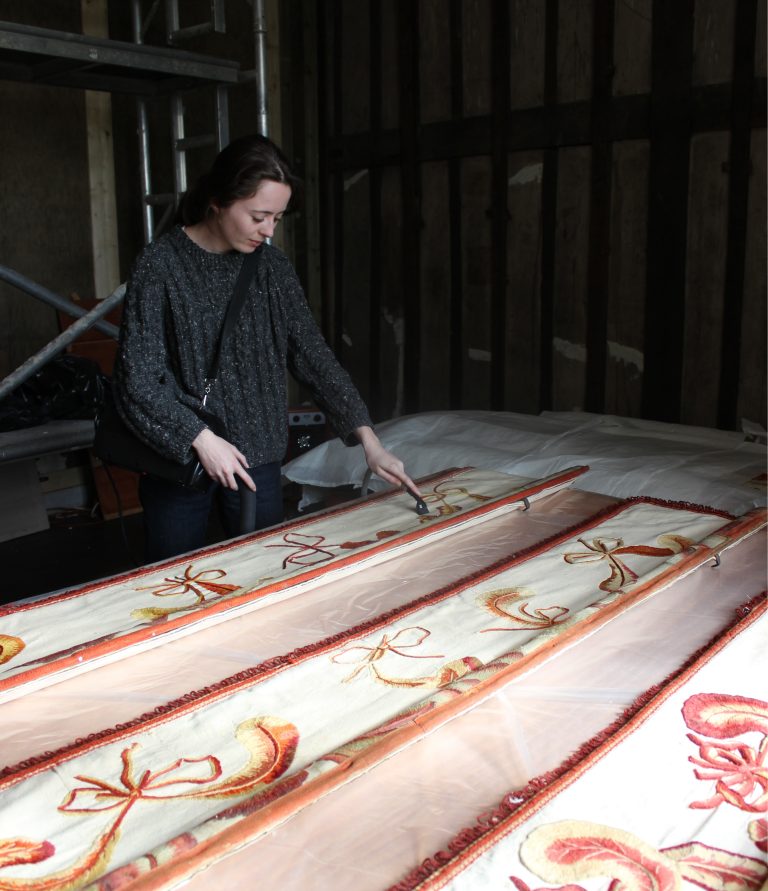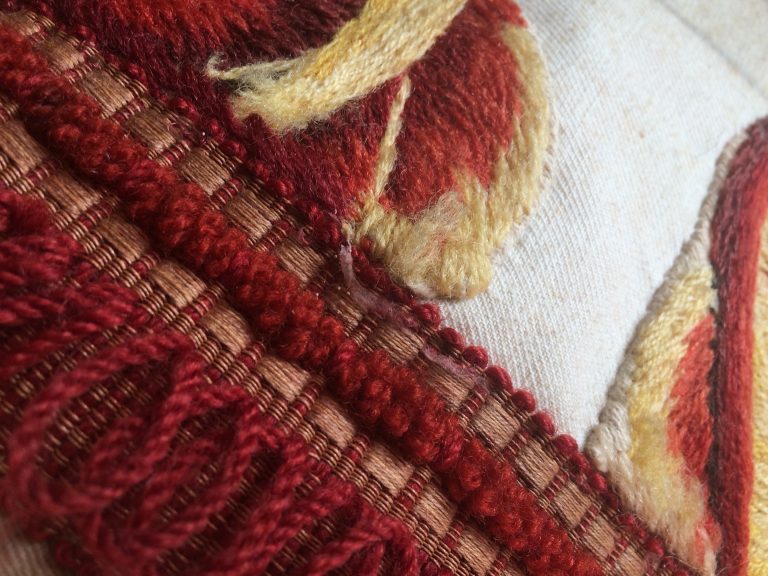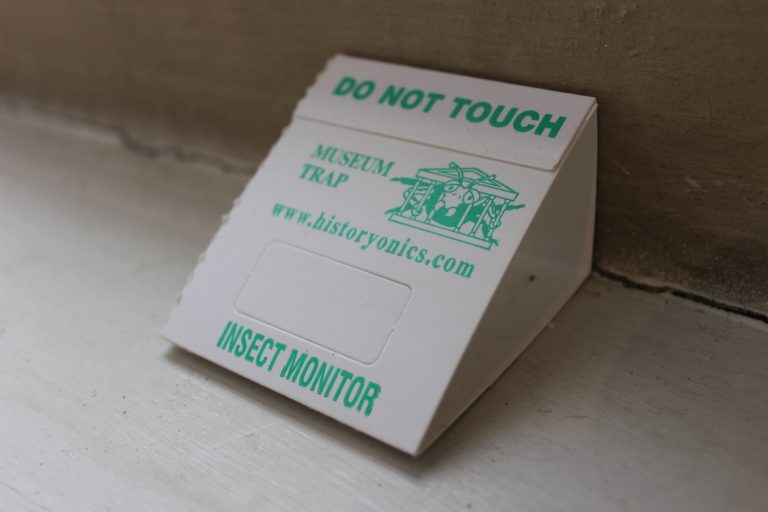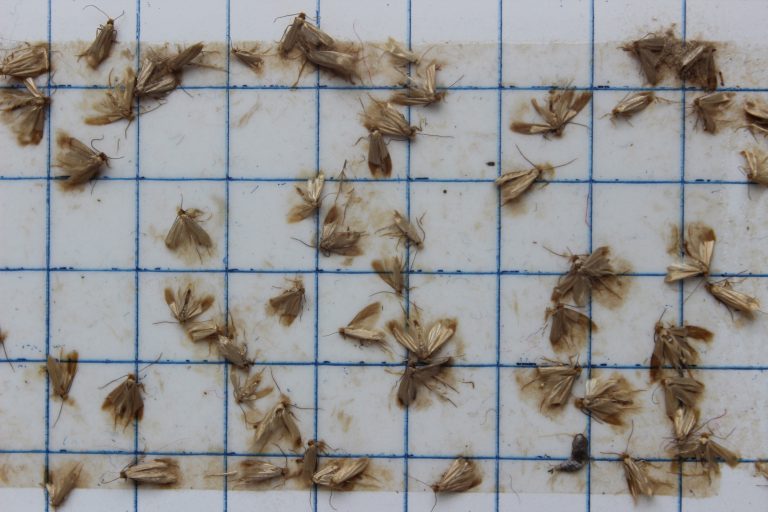Here at Doddington Hall we welcome all our visitors to take a closer look at the textiles, with one or two exceptions…
Clothes moths have notoriously good taste in fabric. So, the conservation team was sad, but not surprised, to find ‘grazing’ on the beautiful crewelwork bed hangings from the Holly Bedroom. We were unsure whether or not this was an active infestation (no live moths or larvae were spotted) and were worried about reintroducing the hangings to the recently conserved tapestries. So, to be on the safe side, we froze the hangings and gave them a thorough vacuuming to eliminate any adult moth, larvae or eggs.
Image 1 – Cleaning the bed hangings
As the weather warms up these pests become more active, so now is a good time to deal with them. Here are our tips for keeping moths at bay and your woollies intact:
– Clothes moths favour wool, although are known to eat other natural fibres and even synthetic material to get to something tastier underneath. Store your most-prized jumpers in sealed bags or boxes and check them every few months.
– The first sign you might see that your textiles are being eaten are little silvery clothes moths flying around. These adult moths don’t, in fact, eat much – it’s at the larval stage that the very hungry caterpillars set to work.
– Clothes moth larvae tend to hide in nooks and crannies, so be sure to check pockets, folds, pleats and seams.
– What are you checking for? Different moths leave behind different calling cards:
- the webbing clothes moth (also known as the common clothes moth) leaves tell-tale tunnels of webbing. These look like silky white rolls of fluff and protect the growing larvae.
- the case-bearing clothes moth cleverly camouflages itself inside a cocoon made of whatever it’s living on. If that’s a blue and white stripey blanket, the larvae will dress itself in – yes, you’ve guessed it – a blue and white stripey cocoon.
Image 2 – webbing found on the Holly Bedroom hangings
– Insect pests are attracted to food and dirt, so it’s important to keep textiles clean of dust and stains. That’s also why we don’t allow visitors to bring food into the house – dropped crumbs are more likely to invite unwanted guests.
– We use sticky traps to catch insects and check them regularly to spot new pests. These are easy to get hold of and set up in corners of rooms and wardrobes.
Images 3 and 4 – Sticky traps
– If you are unlucky enough to find clothes moths, put the affected garments in a bag in the freezer for a few days. Make sure you vacuum the wardrobe too, so as to remove any remaining eggs.
We hope these tips have been useful. If you’d like to know more you can find the conservation team (Louise, Alison, and new recruit Hannah) at work in the house on Wednesdays. Please feel free to ask what we’re up to!
For images and weekly updates on the conservation project, follow us on Instagram at conservation_at_doddington.





